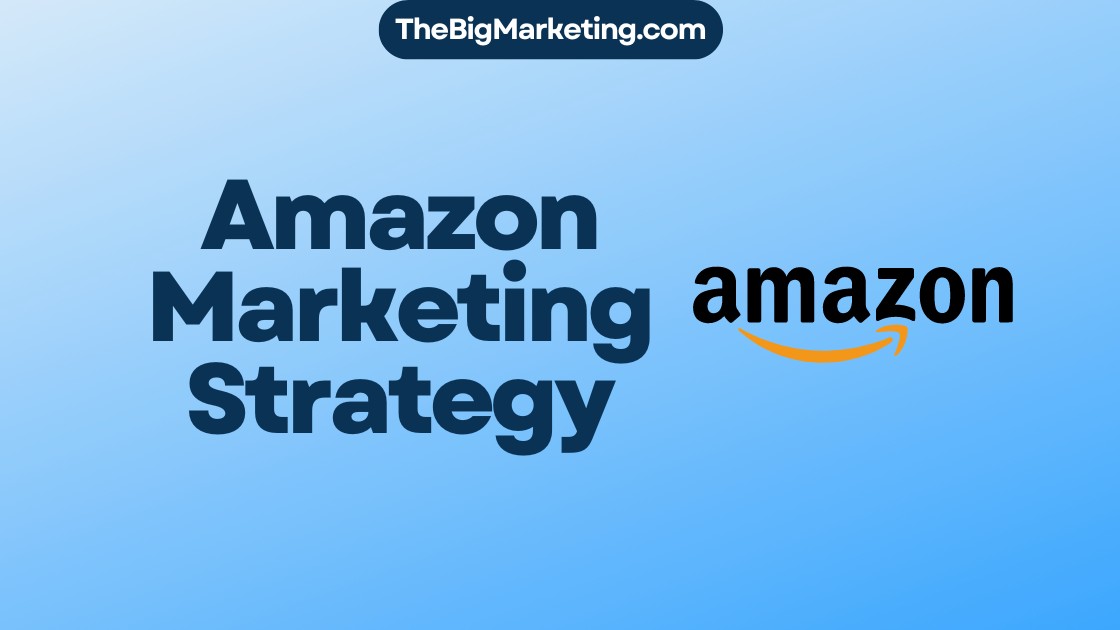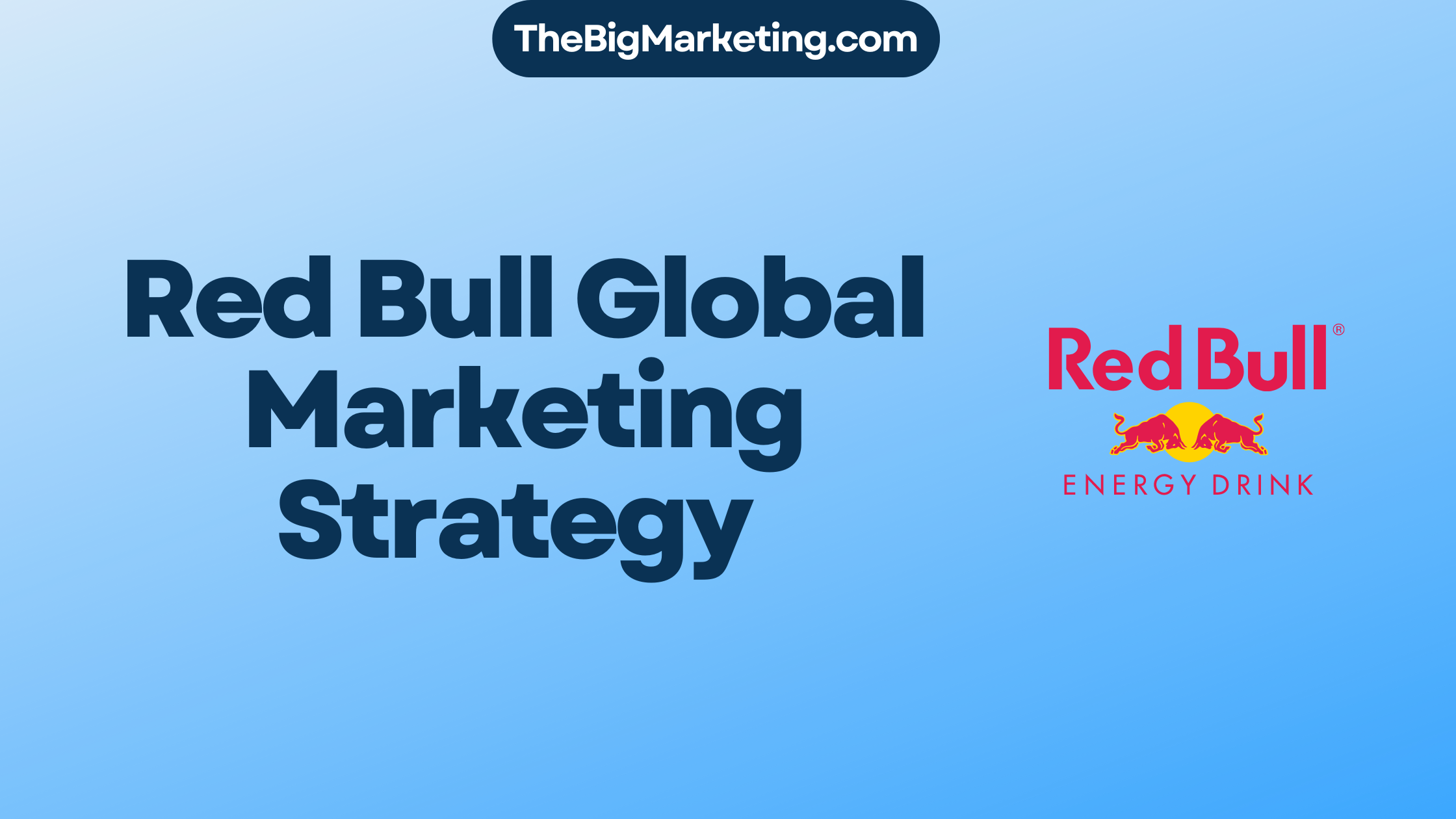The oil and gas industry is a dynamic and ever-evolving sector that demands innovative and effective marketing strategies to stay competitive in the market. In 2024, companies in the oil and gas industry will need to adapt to changing market dynamics and consumer expectations by embracing new tactics and approaches.
Effective marketing strategies for the oil and gas industry will not only focus on promoting products and services but also on building relationships, advocating for sustainable practices, and addressing societal concerns. Companies will need to develop comprehensive marketing plans that encompass various aspects of the industry, from sustainability initiatives to community engagement and digital transformation.
Key Takeaways:
- Effective marketing strategies in the oil and gas industry involve comprehensive approaches that go beyond traditional promotion.
- Adopting sustainable practices and highlighting environmental initiatives can build trust and credibility with consumers and stakeholders.
- Digital transformation is crucial for staying competitive, utilizing data-driven insights, and automating outreach campaigns.
- Content marketing that educates and advocates can position companies as industry leaders and engage with the target audience.
- Community engagement and corporate social responsibility initiatives are essential for fostering positive relationships with local communities.
Sustainability Messaging Takes Center Stage
The oil and gas industry is under increasing pressure to address its impact on the environment. In response to this growing concern, companies are prioritizing sustainability initiatives and embracing environmentally conscious practices. By highlighting their investments in renewable energy, carbon offset programs, and other sustainable practices, oil and gas companies are working to build trust with consumers and stakeholders.
Renewable energy investments play a crucial role in the industry’s commitment to reducing its carbon footprint. Companies are actively exploring and investing in renewable energy sources such as solar, wind, and hydroelectric power. These investments not only contribute to a greener energy mix but also showcase the industry’s dedication to mitigating climate change.
Additionally, companies are implementing carbon offset programs to counterbalance their greenhouse gas emissions. These programs involve supporting projects that reduce or remove carbon dioxide from the atmosphere, such as forest conservation or renewable energy projects. By participating in carbon offset programs, oil and gas companies take responsibility for their emissions and actively contribute to carbon neutrality.
Furthermore, environmentally conscious practices are becoming a major focus for the industry. Oil and gas companies are implementing measures to minimize their environmental impact, such as reducing water consumption, optimizing waste management, and adopting cleaner technologies. These practices not only contribute to the preservation of natural resources but also demonstrate the industry’s commitment to sustainable operations.
Communicating these sustainability initiatives transparently is crucial for building trust. It allows companies to showcase their commitment to environmental stewardship and responsible practices. By clearly conveying their efforts to the public, oil and gas companies can change the perception of the industry and foster a positive image.
Sustainability Initiatives in the Oil and Gas Industry
| Initiative | Description |
|---|---|
| Renewable Energy Investments | Companies are investing in renewable energy sources to reduce their carbon footprint and diversify their energy mix. |
| Carbon Offset Programs | By supporting carbon offset projects, companies aim to neutralize their greenhouse gas emissions and promote sustainable practices. |
| Environmentally Conscious Practices | Companies are adopting practices that minimize their environmental impact, such as reducing water consumption and optimizing waste management. |
Digital Transformation and Data-Driven Marketing
The oil and gas industry is undergoing a significant shift in marketing strategies through digital transformation. Companies are leveraging advanced technologies to reshape their marketing approaches and stay competitive in the evolving digital landscape. Two key elements driving this transformation are data analytics and automation.
Data Analytics: Personalizing Communications and Optimizing Advertising Spend
Data analytics plays a crucial role in helping oil and gas companies better understand their target audience and tailor their marketing communications accordingly. By analyzing customer data, companies can gain valuable insights into consumer preferences, behaviors, and purchasing patterns. This information enables them to create personalized and relevant content, resulting in higher engagement and conversion rates.
Furthermore, data analytics allows companies to optimize their advertising spend by identifying and targeting the most promising marketing channels and campaigns. By analyzing the performance of different marketing initiatives, companies can allocate their resources more efficiently, maximizing their return on investment (ROI).
Automation: Improving Efficiency in Outreach Campaigns
Automation is another critical component of digital transformation in the oil and gas industry’s marketing efforts. By automating repetitive tasks and workflows, companies can streamline their outreach campaigns and significantly improve efficiency.
For example, automation tools can be used to schedule and distribute marketing emails, social media posts, and other promotional content, ensuring consistent and timely communication with the target audience. This eliminates the need for manual intervention and allows marketing teams to focus on more strategic activities, such as content creation and campaign analysis.
Additionally, automation enables companies to implement lead nurturing processes, automatically following up with prospects and guiding them through the customer journey. By delivering personalized and relevant content at each stage, companies can build stronger relationships and increase the likelihood of conversion.
Embracing Digital Transformation for Competitive Advantage
Embracing digital transformation and utilizing customer data through data analytics and automation is essential for oil and gas companies to remain competitive in the rapidly evolving marketing landscape. By leveraging technology to personalize communications, optimize advertising spend, and automate outreach campaigns, companies can effectively engage with their target audience, drive brand loyalty, and increase conversion rates.
Overall, digital transformation empowers companies in the oil and gas industry to adapt to changing consumer expectations, stay ahead of the competition, and achieve sustainable growth in the digital era.
Content Marketing for Education and Advocacy
The oil and gas industry is not only complex but also offers ample opportunities for content marketing that focuses on educating and advocating. By creating informative content that highlights industry innovations, environmental initiatives, and the role of oil and gas in the global energy transition, companies can position themselves as thought leaders and advocates for responsible practices.
Thought leadership pieces, whitepapers, and multimedia content play a pivotal role in engaging with the target audience and establishing credibility. Thoughtful and informative articles, research papers, and videos can effectively convey the industry’s commitment to sustainable practices and its efforts towards a greener future.
Thought leadership articles and whitepapers provide in-depth knowledge and insights into the latest trends, emerging technologies, and best practices in the oil and gas industry. These resources demonstrate expertise and thought leadership, helping companies establish themselves as trusted sources of information.
Multimedia content, such as videos and infographics, offers an engaging and visually appealing format for communicating complex concepts. Through visual storytelling and compelling graphics, companies can effectively convey the importance of environmental stewardship and the industry’s contributions to global energy strategies.
Benefits of Content Marketing in the Oil and Gas Industry
| Benefit | Description |
|---|---|
| Positioning as Industry Leader | Creating thought leadership content establishes the company’s expertise and showcases its innovative solutions and advancements in the oil and gas industry. |
| Building Trust and Credibility | Informative and educational content helps build trust with the target audience and positions the company as a reliable source of information and guidance. |
| Advocacy for Responsible Practices | Content that highlights the industry’s commitment to responsible practices and environmental initiatives promotes industry advocacy and helps shape public perception. |
| Engaging with the Target Audience | Thoughtful and well-crafted content attracts and engages the target audience, fostering meaningful connections and driving brand loyalty. |
Community Engagement and Corporate Social Responsibility (CSR)
Building and maintaining positive relationships with local communities is crucial for the oil and gas sector. Companies in the industry recognize the importance of community engagement and strive to be good corporate citizens through their corporate social responsibility (CSR) initiatives.
Effective community engagement involves open and transparent communication, active participation in community activities, and addressing the concerns and interests of local residents. Oil and gas companies are taking proactive steps to foster positive relationships by supporting local initiatives, investing in infrastructure development, and creating job opportunities for community members.
Corporate social responsibility initiatives focus on making a positive impact beyond business operations. These initiatives often include environmental conservation projects, educational programs, and contributions to local economies. By aligning their CSR efforts with the specific needs of the communities they operate in, oil and gas companies can build trust and credibility.
Effective communication of community engagement and CSR efforts is vital for fostering goodwill and mitigating negative perceptions. Oil and gas companies use various channels, such as websites, social media, and local media outlets, to share information about their initiatives and achievements. Sharing success stories and highlighting the positive outcomes of these endeavors can further strengthen the bond between the industry and local communities.
A collaborative approach involving industry associations, governments, and community organizations can enhance the effectiveness of community engagement initiatives. By working together, stakeholders in the oil and gas industry can address common challenges, promote sustainable practices, and create a positive social impact.
Benefits of Community Engagement and CSR in the Oil and Gas Industry:
- Enhanced public reputation and brand image
- Increased community support and acceptance
- Improved stakeholder relations
- Reduced social and environmental risks
- Positive influence on regulatory decisions
Social Media’s Role in Industry Transformation
Social media platforms play a pivotal role in shaping the narrative of the oil and gas industry, connecting companies with a global audience. Leveraging the power of social media allows companies to strategically position themselves as trailblazers in environmental stewardship, technological innovation, and responsible practices.
By utilizing engaging visuals and thought-provoking content related to energy transition, companies can effectively showcase their commitment to sustainable practices. Platforms such as LinkedIn, Twitter, and Instagram provide opportunities to disseminate information and engage with stakeholders on topics such as carbon reduction initiatives, renewable energy investments, and environmental impact mitigation.
LinkedIn: A Platform for Professional Networking and Thought Leadership
LinkedIn offers a unique space for professionals in the oil and gas industry to connect, collaborate, and showcase thought leadership. Companies can utilize this platform to develop a strong professional network, share industry insights, and publish content that highlights their commitment to environmental stewardship.
Twitter: Real-Time Updates and Industry Engagement
Twitter enables companies to provide real-time updates and engage in conversations related to the oil and gas industry. By actively participating in discussions on sustainability, technology, and industry trends, companies can demonstrate their dedication to pursuing responsible practices and driving industry-wide change.
Instagram: Visual Storytelling for Engaging Audiences
Instagram offers a visually vibrant platform for oil and gas companies to communicate their sustainability initiatives and build a visual brand identity. By sharing compelling images and stories, companies can engage with audiences who are interested in environmentally conscious practices and the energy transition.
In summary, social media platforms like LinkedIn, Twitter, and Instagram provide valuable opportunities for oil and gas companies to shape their narrative and establish themselves as leaders in environmental stewardship. By leveraging the power of social media marketing, companies can foster positive perceptions, build a digital community, and align with the evolving ethos of the industry.
Influencer Partnerships and Industry Collaboration
When hearing the term “influencer marketing,” most people tend to think of consumer brands and social media influencers promoting fashion, beauty, or lifestyle products. However, the oil and gas industry can also benefit greatly from influencer partnerships to communicate industry advancements and sustainability efforts.
By collaborating with influencers who have a strong presence in the energy and environmental sectors, oil and gas companies can tap into their established audiences and leverage their credibility to raise awareness about sustainability practices and innovations within the industry.
Strategic partnerships with influential individuals or organizations allow companies to amplify their messages and reach a wider audience that may be receptive to their sustainability efforts. Leveraging influencer marketing provides a valuable opportunity for the oil and gas industry to engage with diverse stakeholders and foster positive perceptions.
In addition to influencer partnerships, collaboration within the industry for joint marketing campaigns can also play a significant role in strengthening the overall image and addressing shared challenges collectively. By joining forces with other companies in the oil and gas sector, organizations can amplify their marketing efforts and create a unified voice for the industry.
Collaborative marketing campaigns can take various forms, such as co-branded content creation, webinars, industry events, or research initiatives. By pooling resources and expertise, companies can generate greater impact and showcase the industry’s commitment to sustainability, innovation, and responsible practices.
Benefits of Influencer Partnerships and Industry Collaboration:
- Expanded reach and audience engagement
- Influencer credibility and trustworthiness
- Effective communication of sustainability efforts
- Amplification of marketing campaigns
- Establishment of industry-wide standards and best practices

| Influencer Partnerships | Industry Collaboration |
|---|---|
| Tap into established audiences | Amplify marketing efforts |
| Enhance credibility and trust | Showcase industry commitment |
| Generate awareness | Address shared challenges |
| Reach diverse stakeholders | Establish industry-wide standards |
Global Market Diversification
In order to adapt to changing market demands, oil and gas companies are actively exploring diversification strategies. These companies are focusing their marketing efforts on promoting the versatility of their products beyond traditional energy sources. By highlighting the diverse applications of oil and gas products in petrochemicals, plastics, and emerging technologies, the industry can showcase its adaptability and attract new customers from a wide range of markets.
Diversifying into new markets and industries allows oil and gas companies to reduce their dependence on a single sector, mitigating risks and enhancing their overall resilience. By expanding into petrochemicals, for example, these companies can leverage their existing expertise and infrastructure to produce chemicals used in various consumer goods, such as plastics, fertilizers, and pharmaceuticals. This diversification not only opens up new revenue streams, but also facilitates the industry’s transition towards a more sustainable and circular economy.
In addition to petrochemicals, the oil and gas industry is also exploring emerging technologies that align with global sustainability goals. Companies are investing in research and development to create innovative solutions in areas such as renewable energy, carbon capture and storage, and alternative fuels. These efforts not only position the industry as a participant in the global energy transition, but also attract investors and partners who are actively seeking sustainable solutions.
To effectively communicate their diversification strategies, oil and gas companies are leveraging various marketing channels and tactics. They are utilizing targeted advertising campaigns, industry events, and digital platforms to reach their target audience and highlight the benefits of their versatile product offerings. By showcasing the applications and advantages of their products in different industries, companies can expand their customer base and position themselves as leading providers in the evolving global market.
Furthermore, partnerships and collaborations play a crucial role in global market diversification. By forming strategic alliances with other industry players and stakeholders, oil and gas companies can leverage complementary strengths and resources to penetrate new markets and explore innovative business models. These partnerships can lead to joint marketing campaigns, shared research and development initiatives, and mutually beneficial collaborations that drive growth and foster innovation within the industry.
Benefits of Global Market Diversification
| Benefits | Description |
|---|---|
| Reduced Risk | Diversification helps mitigate risks associated with fluctuations in specific markets or sectors, reducing dependence on any single industry. |
| New Revenue Streams | Expanding into new markets and industries provides opportunities to generate additional revenue streams and achieve sustainable growth. |
| Market Adaptability | Diversification allows companies to adapt to changing market demands and emerging trends, enhancing their ability to meet customer needs. |
| Increased Resilience | A diversified portfolio increases the industry’s flexibility and resilience, enabling companies to weather economic downturns and other challenges. |
| Sustainable Transition | Global market diversification facilitates the industry’s transition towards sustainability by fostering the adoption of renewable energy and other environmentally friendly technologies. |
Conclusion
The marketing outlook for the oil and gas industry in 2024 is poised for significant changes. As the industry adapts to evolving market trends and consumer expectations, companies must embrace sustainable practices, digital transformation, community engagement, and global diversification to stay competitive and ensure continued success.
Sustainability messaging will take center stage, with companies highlighting their investments in renewable energy, carbon offset programs, and environmentally conscious practices. Transparent communication of these initiatives will be vital for building trust and maintaining positive stakeholder relationships.
Digital transformation will reshape marketing strategies, with data analytics and automation playing key roles. By harnessing customer data and personalizing communications, companies can optimize advertising spend and improve outreach campaign efficiency.
Community engagement and corporate social responsibility will be integral to marketing efforts, emphasizing positive relationships with local communities and showcasing contributions to local economies. Effective communication of these efforts will foster goodwill and help address any negative perceptions of the industry.
Global market diversification is crucial for adaptation to changing market demands. Companies will highlight the versatility of their products beyond traditional energy sources, including applications in petrochemicals, plastics, and emerging technologies to attract new customers in diverse markets.
Overall, the oil and gas industry’s marketing landscape is evolving rapidly. By embracing sustainable practices, digital transformation, community engagement, and global diversification, companies can navigate these changes effectively and secure a prosperous future in the years to come.
FAQ
What marketing strategies should oil and gas companies adopt in 2024?
Oil and gas companies should adopt effective marketing strategies that focus on sustainability initiatives, digital transformation, community engagement, and global market diversification.
How can oil and gas companies incorporate sustainability messaging into their marketing?
Oil and gas companies can highlight their investments in renewable energy, carbon offset programs, and environmentally conscious practices to address their impact on the environment and build trust with consumers and stakeholders.
How can digital transformation benefit the oil and gas industry’s marketing efforts?
Digital transformation can benefit the oil and gas industry by utilizing data analytics for personalized communications, automation for improved efficiency in outreach campaigns, and optimization of advertising spend.
What role does content marketing play in the oil and gas industry?
Content marketing plays a crucial role in educating and advocating for the industry by creating informative content about industry innovations, environmental initiatives, and the role of oil and gas in the global energy transition.
How important is community engagement and corporate social responsibility for oil and gas companies?
Building and maintaining positive relationships with local communities is crucial for oil and gas companies. By highlighting their corporate social responsibility initiatives, showcasing community partnerships, and emphasizing contributions to local economies, companies can foster goodwill and mitigate negative perceptions.
How can social media contribute to the transformation of the oil and gas industry?
Social media platforms allow oil and gas companies to strategically position themselves as industry leaders in environmental stewardship, technological innovation, and responsible practices. Through engaging visuals and thought-provoking content, companies can foster positive perceptions and build a digital community that aligns with the evolving ethos of the industry.
Can influencer marketing benefit the oil and gas industry?
Yes, influencer marketing can benefit the oil and gas industry by forming strategic partnerships with influencers who can communicate industry advancements and sustainability efforts. Collaboration within the industry for joint marketing campaigns can strengthen the overall image and address shared challenges collectively.
How can oil and gas companies explore global market diversification?
Oil and gas companies can explore global market diversification by promoting the versatility of their products beyond traditional energy sources. By highlighting applications in petrochemicals, plastics, and emerging technologies, companies can showcase the adaptability of the industry and attract new customers in diverse markets.
What is the marketing outlook for the oil and gas industry in 2024?
The marketing outlook for the oil and gas industry in 2024 emphasizes the importance of sustainability messaging, digital transformation, community engagement, and global market diversification. Effective marketing strategies will communicate responsible practices, embrace digital innovation, and adapt to changing expectations.







